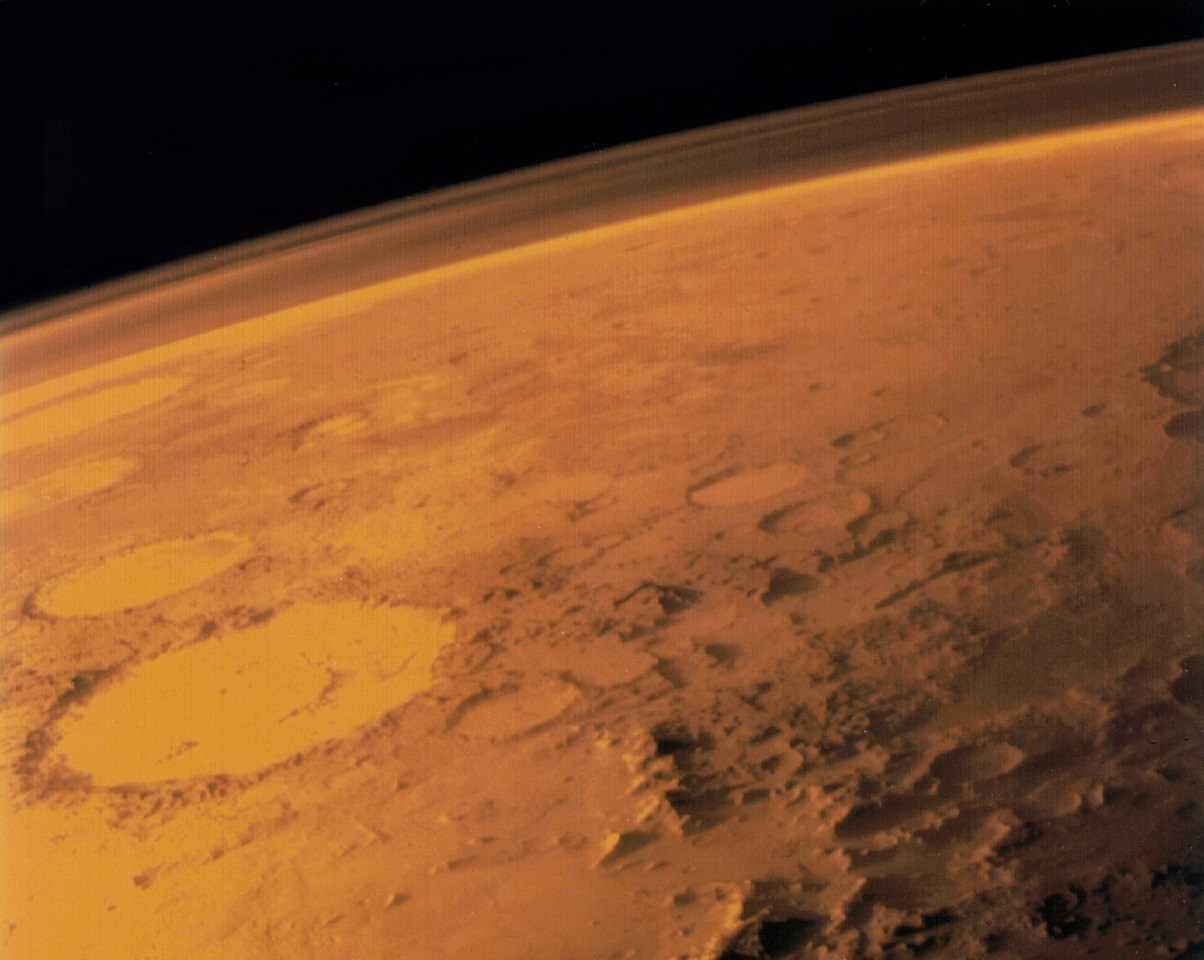The atmosphere of Mars is less than 1% of Earth’s, so it does not protect the planet from the Sun’s radiation nor does it do much to retain heat at the surface. It consists of 95% carbon dioxide, 3% nitrogen, 1.6% argon, and the remainder is trace amounts of oxygen, water vapor, and other gases. Also, it is constantly filled with small particles of dust(mainly iron oxide), which give Mars its reddish hue.
Scientist believe that the atmosphere of Mars is so negligible because the planet lost its magnetosphere about 4 billion years ago. A magnetosphere would channel the solar wind around the planet. Without one, the solar wind interacts directly with the ionosphere stripping away atoms, lowering the density of the atmosphere. These ionized particles have been detected by multiple spacecraft as they trial off into space behind Mars.
This leads the surface atmospheric pressure to be as low as 30 Pa(Pascal) with an average of 600 Pa compared to Earth’s average of 101,300 Pa. The atmosphere extends to about 10.8 km, about 4 km farther than Earth’s. This is possible because the planet’s gravity is slighter and does not hold the atmosphere as tightly.
A relatively large amount of methane has been found in the atmosphere of Mars. This unexpected find occurs at a rate of 30 ppb. The methane occurs in large plumes in different areas of the planet, which suggests that it was released in those general areas. Data seems to suggest that there are two main sources for the methane: one appears to be centered near 30° N, 260° W, with the second near 0°, 310° W.
It is estimated that Mars produces 270 ton/year of methane. Under the conditions on Mars, methane breaks down as quickly as 6 months(Earth time). In order for the methane to exist in the detected quantities, there must be a very active source under the surface. Volcanic activity, comet impacts, and serpentinization are the most probable causes. Methanogenic microbial life is a very remote alternative source.
The atmosphere of Mars will cause a great number of obstacles for human exploration of the planet. It prevents liquid water on the surface, allows radiation levels that humans can barely tolerate, and would make it difficult to grow food even in a greenhouse. NASA and other space agencies are confident that they will be able to engineer solutions for the problem within the next 30 years, though. Good luck to them.
Of course, we have written many articles about Mars’ atmosphere. Here’s an article about how the planet once held enough moisture for drizzle or dew. And here’s an article about the Mars methane mystery.
If you’d like more info on Mars, check out Hubblesite’s News Releases about Mars, and here’s a link to the NASA Mars Exploration home page.
We have recorded several podcasts just about Mars. Including Episode 52: Mars and Episode 92: Missions to Mars, Part 1.
Sources:
http://solarsystem.nasa.gov/planets/profile.cfm?Object=Mars&Display=OverviewLong
http://quest.nasa.gov/aero/planetary/mars.html
http://www.nasa.gov/home/hqnews/2009/jan/HQ_09-006_Mars_Methane.html

